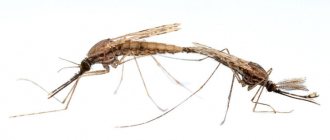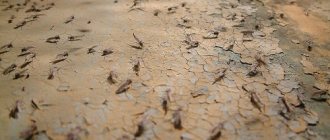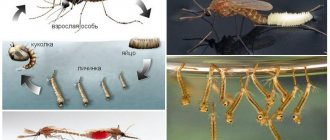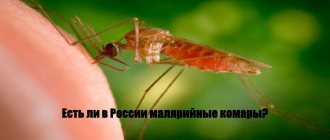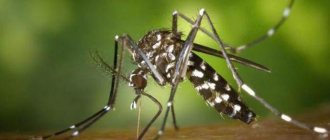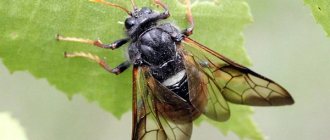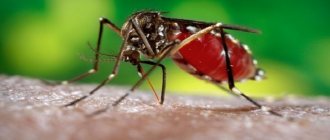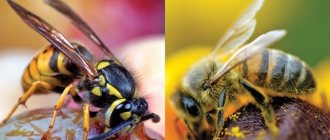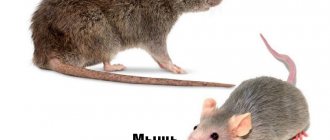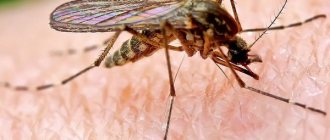With the exception of Antarctica, mosquitoes are everywhere. Each of us is familiar with it, and we all know how the situation can turn out if the window is open in a hot, humid summer and there is no mosquito net on it - the night will be ruined, and by the morning the body will be covered with itchy bite marks. And at such moments it seems that this insect can only cause harm, especially if you take into account the diseases that it carries. But the mosquito is not so simple. Let's find out a little more about him.
Who are mosquitoes?
Mosquitoes are representatives of the Diptera family and belong to the long-whiskered group. In total, there are about 3 thousand species of these insects. In Russia there are mosquitoes of the genus biting, malarial and true, and in total more than 100 species of them are common in our country. In the city, the most widespread mosquito is the common mosquito.
Body structure
A mosquito has the following structure:
- the body is thin, no more than 1.5 cm long, colored gray, yellow or brown; the body consists of three main parts - the head, chest and abdomen;
- on the head there are antennae, divided into 15 small segments, and an oral apparatus, represented by two pairs of jaws, a tongue, numerous small teeth and a pair of lips; the lips form a kind of groove in which long needles are located; the groove of females has bristles and is somewhat longer than that of males;
- the abdomen is divided into ten segments; the last two are parts of the external genitalia, near which the anus is located; the first eight segments are connected to each other by an elastic membrane - the pleura, and each consists of two plates - ventral and dorsal, the second - sixth segments are carriers of spiracles;
- for insects of the mosquito family, the chest is the central organ to which, in addition to the head and abdomen, the legs and wings are attached; the chest itself consists of three parts: prothorax, mesothorax and metathorax; the prothorax has an exoskeleton consisting of three plates; The mesothorax consists of the same number of plates, but it is more developed and bears the anterior thoracic spiracle; the metathorax is located on the sides of the thoracic region
- the wings are thin and narrow, consisting of veins located lengthwise and transversely, along the edge of each wing is framed by a costal vein; scales are unevenly located on the surface, which form a fringe along the rear edge of each wing;
On a note! Some scientists are inclined to think that on the surface of the wings there are nerve endings, which are sensory organs!
- the legs are located on the mesothorax and their number is six; each leg is divided into a pelvis, trochanter, femur, tibia and tarsus; each paw, in turn, consists of five segments and on the last one has two claws; There is one sucker under each claw; on the inner parts of the hind tibia there are several flat spines arranged in a row.
Females and males - looking for differences
Male and female mosquitoes differ in both external characteristics and food preferences:
- female representatives feed on blood, as it is a source of protein, lipids and iron; thanks to such food, female mosquitoes are able to continue the race; after satiation, the mosquito flies to a secluded place, where it digests the extracted portion for several days, at the same time the eggs mature in its body; For males, for normal life, flower nectar, which is saturated with carbohydrates, is enough; carbohydrates in the mosquito’s body are converted into glycogen - this is the energy that the male gradually consumes during flights;
- during the act of feeding, females must pierce the dense skin, and therefore their oral apparatus is equipped with piercing needles located in the proboscis; males do not have these needles, since they simply do not need them;
- a male mosquito has longer hairs on its antennae and this is noticeable even without a microscope; they look like soft fluffy feathers; The mustache of the female half of the mosquito family is very thin and inconspicuous.
Life cycle of male and female
The male mosquito has a shorter life cycle than the female mosquito. Most often, its lifespan is 10-14 days. Females live much longer - up to 25-30 days. Females endure wintering most easily. They take refuge from frost and winds in cracks and under the bark of trees, where they hibernate until spring.
Mosquitoes most often do not survive wintering, since their lifespan, even under optimal environmental conditions, does not exceed 3 weeks. Female individuals, having fallen into hibernation, can remain in this state for up to 2-3 months.
The mosquito can hibernate for up to 12 weeks
Lifestyle
Do you know where mosquitoes live? The habitat of these bloodsuckers will depend on the following factors:
- type of insect - some are able to exist in a temperate climate, for others the most suitable place to live is tropical forests;
- location of the food source - at a certain period of life, females feed on the blood of humans and animals, and therefore they will always be in close proximity to the source of saturation;
- climatic conditions - mosquitoes do not like the cold too much and will always choose a warmer place;
On a note! The optimal air temperature for their normal existence is +16°C!
- high humidity - the most favorable place for reproduction is a place where the air humidity is in the range of 80-90%.
On a note! Scientists note the fact that mosquitoes can adapt to the most unexpected living conditions, and therefore it is possible that they will soon be able to populate Antarctica!
Lifespan
The lifespan of a mosquito is somewhat longer compared to, say, the lifespan of ants and butterflies. However, it is impossible to name the exact period of time, since it depends on:
- gender - nature has allocated only three weeks of life for a male, but for females a much longer period has been prepared, which is about three months;
On a note! The presence of favorable conditions and winter suspended animation extend the lifespan of females - in this case it increases to one year!
- nutrition - how long a mosquito lives is also influenced by its menu, for example, if a source of saturation is constantly nearby, then the female will have the energy to lay eggs and remain in good health after that, but if the diet is insufficient, the young it will turn out weak, and the mosquito itself will die immediately after laying its eggs;
- temperature conditions - despite the fact that these insects take root well in almost any conditions, they still affect their life expectancy; if the ambient temperature is +23°C and above, then the female mosquito will live no more than 43 days, 20...23°C - 58 days, 15...20°C - up to 114 days, 10...15°C - about 120 days .
On a note! The idea that a mosquito dies immediately after being bitten is wrong. In addition, their life expectancy is not affected by the number of people bitten or the amount of blood they drink! After being bitten, the bloodsucker can only die if the victim slams it down!
Choice of victim
Although mosquitoes are small in size, they have excellently developed sense organs. The entire surface of the insect's body is dotted with receptors, with the help of which they can recognize the presence of people at a distance of up to 50 meters. The smell and its characteristics captured by the mosquito are the fundamental criterion when choosing victims.
Most of the olfactory receptors are designed to recognize substances that are found among the components of blood, sweat of people and animals. For example, the species Anopheles gambiae (which carries malaria) in most cases selects only people to attack, but in the absence of an alternative source, it selects other victims to obtain protein food.
Mosquito antennas contain 72 different types of recipes that allow you to detect:
- Carbon dioxide is a compound that attracts insects because it is produced by humans and animals during respiration. At the same time, other chemicals are exhaled - octenol and acids. Sensitive receptors can quickly analyze the components and, based on this, select the most preferable victims. Note that adults have a larger lung capacity, that is, they secrete more substances, so they suffer from attacks more often than small children. Mosquitoes also prefer pregnant women.
- Body aroma. The smell of a person depends on the bacterial colonies that live near the gonads. Sweat is a biological fluid that has an unpleasant odor for humans, but has a very attractive effect on bloodsuckers. Because of this, people who are sweating after hard work will be attacked first, and those who have just gotten out of the shower will be left for last.
- Skin discharge. Mosquitoes are good at capturing substances that the skin secretes as they rush towards their victims.
- Blood type. The results of the studies have proven that this type of insect prefers people with the first blood group, but they try to avoid the second.
- Lactic acid - this substance is released by a person through sweat, as well as when exhaling carbon dioxide.
Of course, there are a number of other parameters that influence the choice of prey by mosquitoes. For example, people’s body temperature, their movements, and even the shade of clothing play an important role. But still, the key role is the smell of the human body and the components that it releases when breathing.
How dangerous are mosquitoes?
The main danger of mosquitoes is that they are carriers of diseases. The development of diseases can be triggered by parasites, viruses and pathogenic bacteria that the bloodsucker carries on its paws and proboscis.
So, what diseases do mosquitoes carry?
- Different types of malaria, which are parasitic diseases. Their causative agents are parasites belonging to the Plasmodium species. Such diseases are carried by mosquitoes belonging to the genus Anopheles, popularly known as malaria mosquitoes.
- Lymphatic filariasis, the symptom of which is elephantiasis. Many types of bloodsuckers can carry this disease.
- Diseases caused by the vector Aedes aegypti. These include chikungunya, yellow fever and dengue fever. The latter most often affects travelers who have visited southern Central Asia, Central America and the Caribbean.
On a note! It is characteristic that Dengue fever can only be transmitted through infected mosquitoes; this disease does not spread from person to person!
- West Nile virus is an arbovirus infection spread by mosquitoes. She made the people of the United States very afraid. However, there is still no reliable information about the causes of the spread of this disease.
- Eastern equine encephalitis virus, which has become widespread mainly in the eastern United States.
- Tularemia is an infectious disease caused by the bacteria Francisella tularensis. It is transmitted through the bites of certain types of mosquitoes and flies.
Important! About 700 million people annually become infected with various diseases through mosquito bites. Residents of South and Central America, Africa, Mexico, Asia and Russia are most often affected. And at the same time, about 2 million people die from such diseases every year!
What do mosquitoes eat in the swamp?
It is known that females drink predominantly lymph. In swamps, they select food sources such as frogs, birds or fish.
Not many people know what a mosquito in a swamp feeds on, other than blood. Thus, the centipede prefers to eat humus or algae. Adult mosquitoes absorb plant juices or nectar.
Here's what different types of mosquitoes eat in the swamp:
- Bolotnitsa. The meadow feeds on plant nectar and the remains of rotting algae.
- Zvonets. The jerk mosquito also eats vegetation. The insect lives in the reeds. The color of the pest is green-yellow or dark brown.
- Karamora. The centipede does not drink blood, but feeds on plant sap or nectar. Caramora larvae have the greatest appetite; they eat algae, roots, and young vegetation in water and on land.
Importance for nature
The role of mosquitoes in nature is much more significant than it might seem at first glance. This small insect takes an active part in many important processes:
- Living most of their lives in water, they accumulate in their bodies a huge amount of important trace elements, minerals and beneficial bacteria, which, after the death of the insect, end up in the soil, enriching and fertilizing it;
On a note! From this point of view, mosquitoes become especially important for the taiga, where they are sometimes the only ones who transfer microelements from swamps to the soil! Every year, these small insects carry about 16 kg of nitrogen, 9 kg of phosphorus and 6 kg of calcium on their tiny legs!
- in the form of pupae, larvae and adults, they are food for many species of fish, birds, animals and large insects; In this way, mosquitoes maintain the stability of their food supply;
- Feeding on plant nectar, they participate in the pollination process, spreading pollen on their legs, wings and proboscis.
Surprisingly, such a simple and sometimes dangerous mosquito actually brings enormous benefits to nature.
Harm and benefits of mosquitoes
Insects play their role in the balance of nature. The larger inhabitants of the planet feed on adults and their larvae. Females cause harm to humans. Their bites are painful to humans and cause irritation on their skin. In addition, female mosquitoes are capable of transmitting infection, infecting the victim with malaria and tularemia. Scientists are confident that an average person can survive five hundred mosquito attacks. When there are more mosquito bites, a person experiences intoxication or painful shock.
How to protect yourself from insects:
- Using a mosquito net.
- Loose-fitting clothing.
- Applying repellents to the skin.
- In the forest, smoke from a fire and ordinary tree branches can save you if you break them and brush away mosquitoes.
- People who are sensitive to insect bites are advised to carry antihistamines with them.
Diet of the mosquito family
Few people know that mosquitoes feed on flower nectar, juices, and pollen in addition to blood. Immediately after birth, the young generation gathers in the grass near a lake, pond, or swamp. For some time they lead a carefree life, content with a small amount of food. Then they gather in flocks and the mating season begins. It lasts about a week.
On a note!
The diet of a fertilized female changes significantly, she becomes aggressive and thirsts for blood. Male mosquitoes continue to feed on plant foods, live in the wild, and do not harm either humans or animals.
Most representatives of the mosquito family are found in the forest, in a swamp, near a pond, and also near a large puddle. For the development of larvae, standing water or damp soil is needed. Having drunk blood, the female digests it for several days, and during this time eggs are formed inside. After a few days, the mosquito lays them in a pond with stagnant water.


